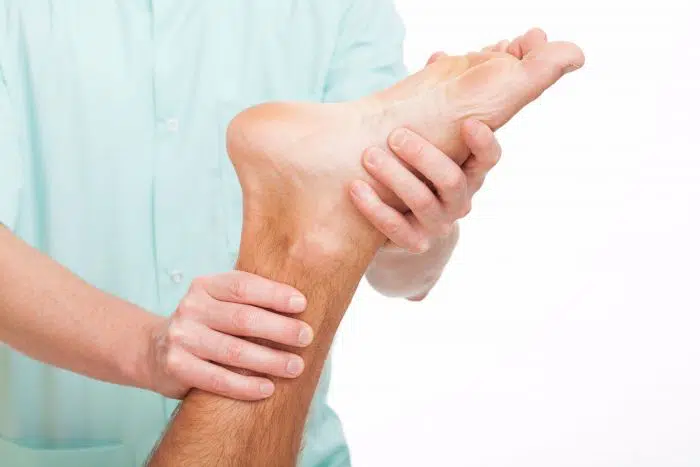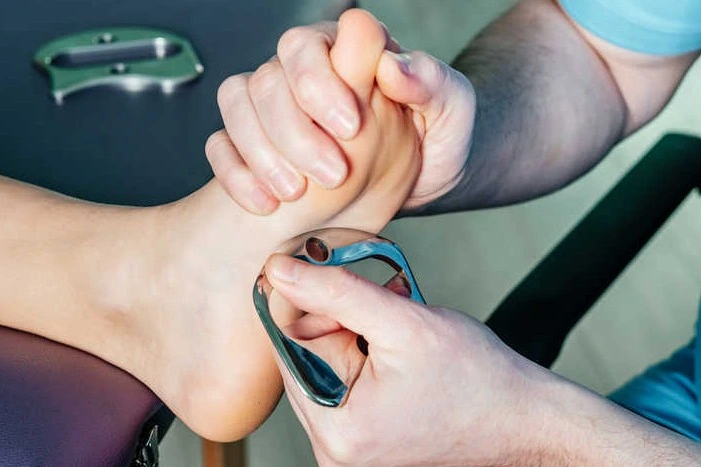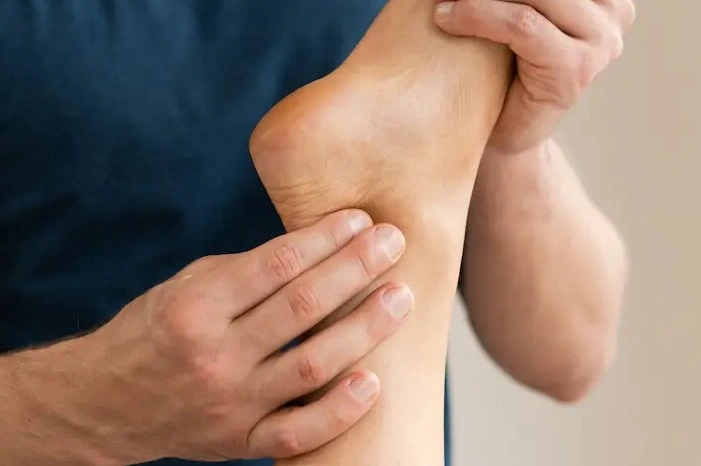Plantar Fasciitis
Clinical Signs and Symptoms
Plantar fasciitis is a painful inflammation of the thick fibrous band of connective tissue which runs across the bottom of the foot.
Plantar fasciitis typically presents as pain on the bottom of the foot, most
commonly at the heel. The pain is often most intense with the first steps in
the morning. It is commonly exacerbated when flexing the foot toward the
shin. While symptoms usually improve with walking, the pain may recur after
prolonged standing or when rising from a seated position. Pain may also refer
to the lower leg or knee.

Causes
- Overuse, running
- Collapse of the plantar arch – pes planus (flat foot)
- Collapse (over pronation) that occurs with pes cavus
- Ill-fitting shoes
- Ill fitting orthotics (foot supports)
- Leg length inequality
- Adrenal stress
- Weak support of muscles supporting the foot
- Congenital deformities of the foot
- Knee, foot or ankle subluxations
Chiropractic / Applied Kinesiology Approach to Plantar Fasciitis
Plantar fasciitis is usually diagnosed through a physical exam; imaging tests are rarely needed. Structural findings such as heel spurs, bunions, and other bony changes are not defects in and of themselves, but rather represent the
body’s natural, protective adaptations. For instance, a heel spur may develop to reduce tension on the plantar fascia and help prevent it from
overstretching and tearing. Similarly, bunions can serve to improve balance and stability in a foot with a collapsed arch. As such, surgical removal of
bunions or heel spurs should generally be avoided, unless clearly indicated for other reasons.
Orthotics (foot supports) may be used in some cases, but they often indicate a failed attempt at proper rehabilitation. If not fitted using manual muscle testing, they’re typically based on static foot imprints, which say little about the body’s neurological response to the support. Orthotics should be used cautiously and only after genuine rehabilitative efforts have been made.
Dr. Morrison takes a conservative approach to rehabilitate the foot arch, focusing on manual therapies that target the connective tissues of the foot and ankle. Treatment may include deep tissue massage and specific manipulation of the foot, ankle, lower leg, and knee. Supplements and nutritional support are also provided, aiming to reduce adrenal stress and
inflammation.




